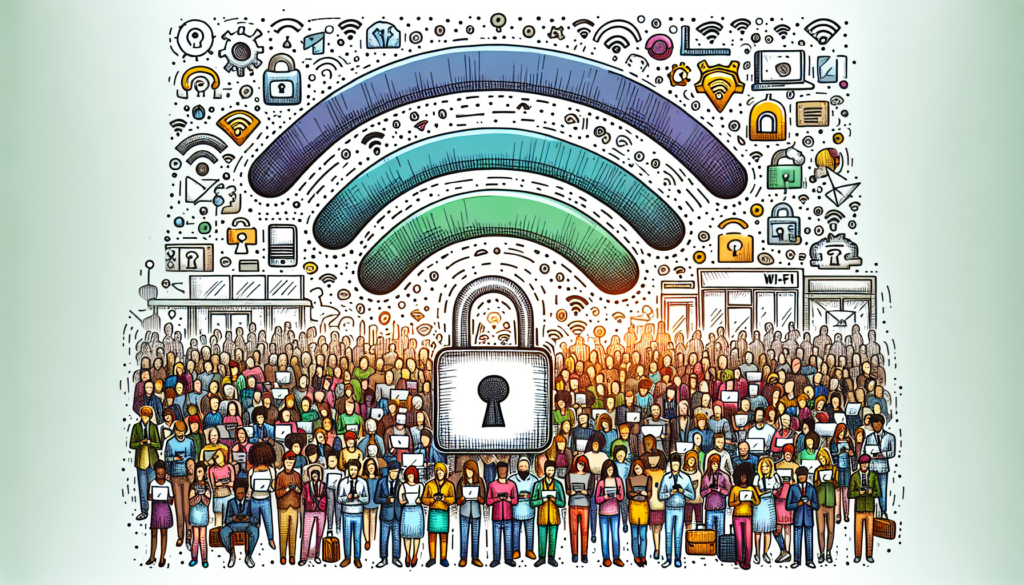Let’s face it, who doesn’t love free Wi-Fi while hanging out at coffee shops, cafes, or malls? It’s a lifeline for many of us, especially students and professionals who need to stay connected. But there’s a hidden side to public Wi-Fi that’s often ignored.
Despite frequent warnings from tech experts about the risks of public Wi-Fi, many of us brush these concerns off. How risky can it really be to connect to a free network, right? Well, this article aims to shed light on some of the real and significant dangers that come with using unsecured public Wi-Fi networks.
The Reality of Unsecured Public Wi-Fi
Many of us casually connect to public Wi-Fi without a second thought, considering it a harmless and everyday occurrence. However, tech and networking experts view it differently. A Wireless Access Point (WAP), commonly known as a wireless network connection, is harmless by itself but becomes a risk when it’s unsecured.
Think about your home Wi-Fi: you use a password, right? That’s to control access and prevent just anyone nearby from using your network. In simple terms, a Wi-Fi network that requires a password is "secure." On the other hand, public Wi-Fi often lacks these security measures – no password, no encrypted data connection, and no validation process. This makes it "unsecured."
The Risk to Your Login Credentials
An unprotected connection can be an open door for hackers and cybercriminals to spy on your online activities. Worse, they can use this unsecured network as a gateway to collect personal information from you, including login details for various services.
Cybercriminals can exploit the information they gather for their own purposes, which might include accessing your social media, gaming accounts, financial services, and even banking information.
Beware of Wi-Fi Honeypots
The concept of a "honeypot" in Wi-Fi terms refers to a deceptively secure-looking hotspot set up by hackers. These honeypots are designed to attract unsuspecting users in need of an internet connection.
Skilled hackers can craft these honeypots to mimic legitimate public Wi-Fi networks, like those of popular coffee shops or eateries. They appear normal and safe, but they’re anything but. If you find yourself in a situation where you’re unsure about a public Wi-Fi network, ask the staff a few key questions:
- What’s the exact name of your Wi-Fi network?
- How do I log in, and what should I expect to see once I’m connected?
- Is there any additional information I should know about using your network?
The Threat of Viruses and Malware
As if data theft wasn’t concerning enough, unsecured public Wi-Fi networks can also be breeding grounds for malicious software, including malware and viruses. Cybercriminals often use these vulnerable networks to spread harmful software.
Distributing malware and viruses is an effective tactic for hackers targeting specific websites or private networks to extract valuable and sensitive information. This makes connecting to unsecured public Wi-Fi a risky endeavor not just for your personal data but also for your device’s health.
The Risk of Bandwidth Theft on Public Wi-Fi
One often overlooked danger of public Wi-Fi is bandwidth theft. Hackers and cybercriminals can exploit these networks for free internet access. Worse yet, they could enable unauthorized log-ins from numerous users, potentially overloading the system and exceeding bandwidth limits.
Potential for Illegal Use of Your Network
Another serious concern with unsecured public Wi-Fi networks is their potential misuse for illegal activities. Unauthorized users who gain access to these networks might engage in illicit activities such as spreading illegal content. Such actions can happen without the knowledge of network administrators or the owners of the Wi-Fi service, potentially leading to legal issues for those responsible for the network.
Given these risks, it’s crucial to know how to protect yourself when using public Wi-Fi. Let’s explore some effective strategies to safeguard your online activities on these networks.
Disable Automatic File Sharing
Most laptops, smartphones, and tablets have a ‘file sharing’ feature to facilitate easy transfer of files. However, when connected to an unsecured network, it’s wise to turn this off. Cybercriminals could be on the lookout for devices with open sharing settings, making you an easy target.
By disabling file sharing, you significantly reduce your vulnerability to these online threats.
Use a VPN for Enhanced Security
A Virtual Private Network (VPN) is an effective tool for securing your internet connection. It encrypts both incoming and outgoing data, providing a shield against hackers and cybercriminals. Using a VPN is especially crucial when you’re on public Wi-Fi, as it adds an essential layer of security to your online activities.
Turn Off Wi-Fi When Not in Use
Finished using the internet? Make sure to turn off your Wi-Fi. Even when you’re not actively browsing, if your device is connected to an unsecured network, it’s still vulnerable. Hackers can exploit this continuous connection to access your device.
Being aware of these risks is crucial, especially given how easily devices can be compromised on unsecured networks. Public Wi-Fi spots are hotbeds for cybercriminal activity, with a constant stream of potential victims. If you absolutely need to use public Wi-Fi, ensure you have protective measures like a VPN in place.

